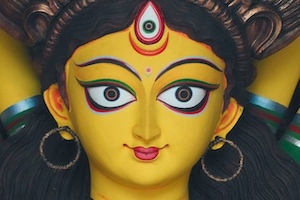Shankaracharya backs Puri temple as only Jagannath Dham
The Statesman | 14 May 2025The controversy is around the newly-built Jagannath temple at Digha, which has been drawing massive crowds daily since its inauguration. From the beginning, the BJP opposed the construction of the temple with government expenditure. Now, with Shankaracharya’s subtle yet pointed tweet — seen by many as a veiled critique of the West Bengal government — the party has found new fuel for its argument. The tweet may not name Digha, but it doesn’t need to.
In India, where politics and faith are often inextricably linked, the new religious-political fault line is emerging—this time over the sanctity of “Jagannath Dham.” Without naming names or locations, the Shankaracharya’s terse declaration posted on his official X (formerly Twitter) handle on Sunday left little room for ambiguity: “Shree Jagannath Puri situated in Utkal Pradesh (Odisha) is the only Jagannath Dham. Imagining any other place as such is wholly inappropriate.” But the spiritual leader’s decision to tag West Bengal chief minister Mamata Banerjee in the post added a political charge that quickly reverberated across state lines. The tweet drew sharp reactions from the Bharatiya Janata Party (BJP), particularly its IT cell head Amit Malviya, who accused the CM of misappropriating religious symbols for political gain. Mr Malviya said the post by the Shankaracharya had vindicated the BJP’s long-standing opposition to naming the Digha temple complex as “Jagannath Dham”.
The temple, inaugurated on 10 May (Akshaya Tritiya) by Mamata Banerjee, has become a major attraction for devotees and tourists, drawing a large number of devotees. Built with the involvement of Puri temple servitors and monks from the International Society for Krishna Consciousness (ISKCON), it features idols of Jagannath, Balabhadra, and Subhadra.
However, critics in Odisha and West Bengal have raised objections, saying that the term “Jagannath dham” is traditionally associated with the centuries-old temple in Puri, Odisha—one of the four cardinal dhams or holy seats established in Hindu philosophy. Earlier, the Odisha government had looked into claims that sacred neem wood—left over from the Nabakalebara rituals in Puri—had been used in crafting the idols for the Digha temple.
Following an investigation, the Puri temple administration informed Odisha’s law minister that no such wood had been officially sent out, effectively closing the inquiry. The BJP’s Bengal leadership had boycotted the inauguration, with state president Sukanta Majumdar and Leader of Opposition in Bengal Assembly Suvendu Adhikari publicly criticising the project. However, former BJP state chief Dilip Ghosh did attend, sparking internal differences within the party. For many in Odisha, the naming of the Digha temple touches a deeper cultural nerve. The state, home to an estimated 45 million Jagannath devotees, sees Puri’s temple as not just a place of worship but a cornerstone of Odia religious identity. The involvement of the Shankaracharya, a senior religious authority who oversees one of the four cardinal maths of Hinduism, has added religious weight to the political and cultural debate. The West Bengal government has so far refrained from commenting directly on Shankaracharya’s post, but officials have defended the temple project as part of the state’s broader efforts to promote religious tourism and cultural heritage.
As the issue continues to stir debate in both states, observers say the dispute is unlikely to end soon. What began as a religious and cultural initiative has now entered the larger theatre of identity politics, with implications that may stretch beyond state boundaries. Meanwhile Rajesh Dayitapati, the appointment secretary of Puri’s temple servitors, has been suspended for a month by the Shri Jagannath Temple Administration over his involvement in the Digha Jagannath temple controversy. Accused of facilitating the use of sacred leftover neem wood (Daru) from Puri for the Digha idols, Rajesh had led a 60-member team to the temple’s inauguration.
After failing to respond satisfactorily to two show-cause notices, he was barred from entering the Puri temple for 30 days.
